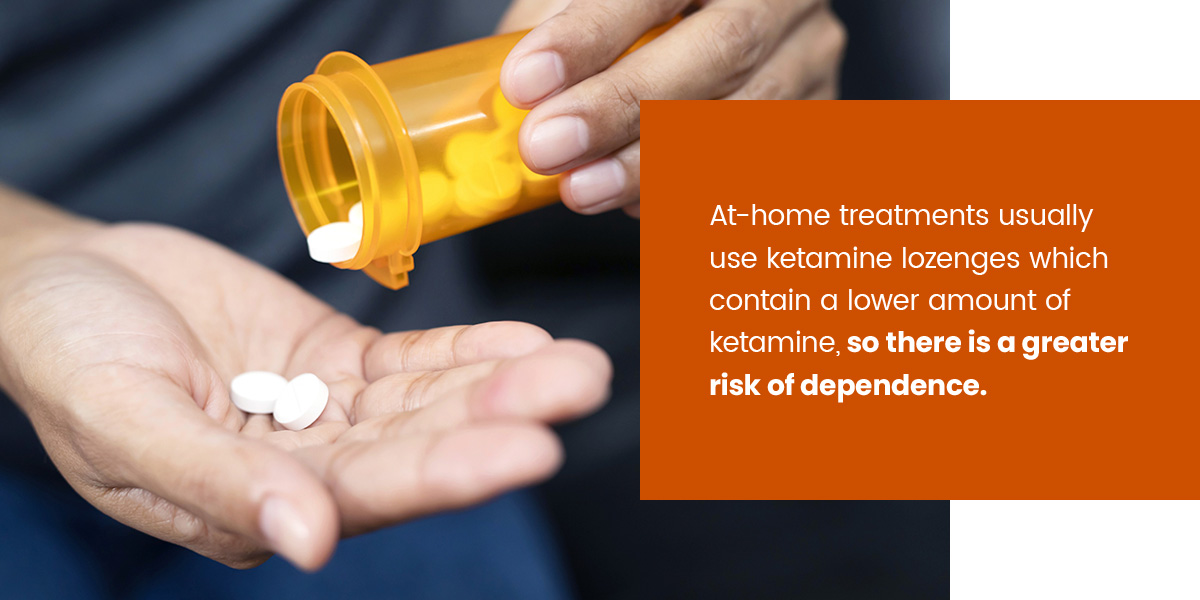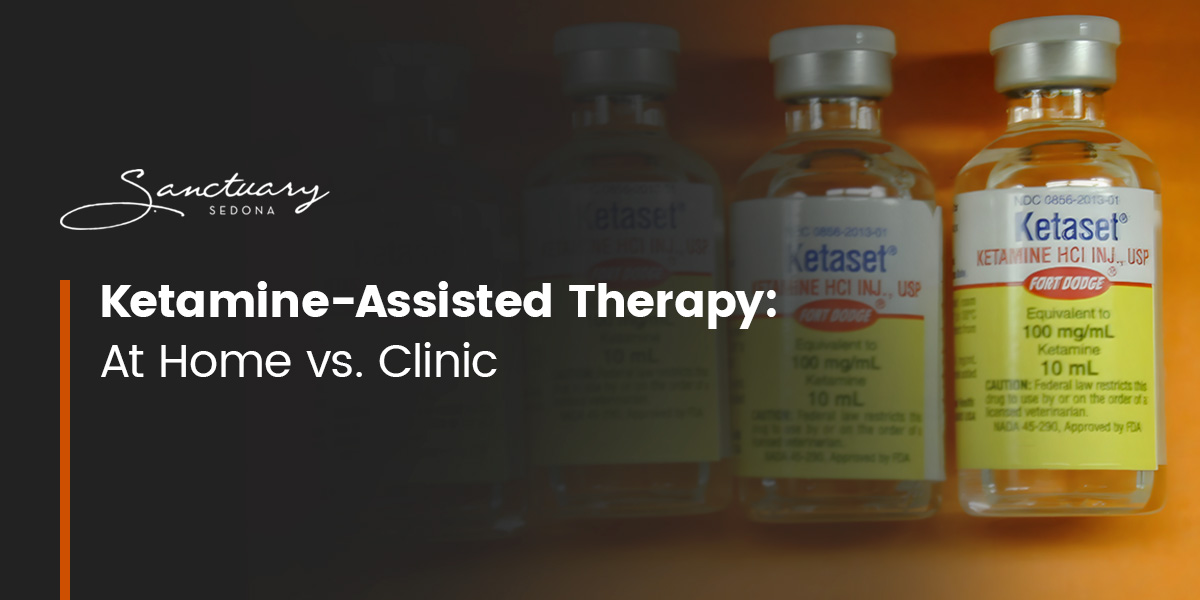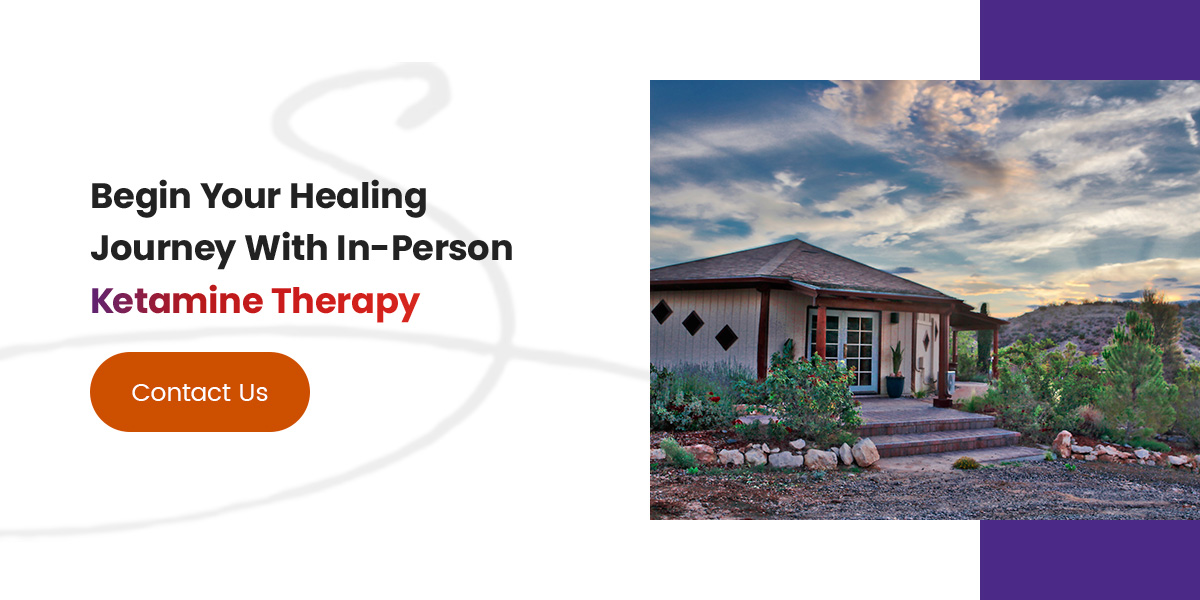Ketamine-assisted therapy (KAT) is a therapeutic approach to treating addiction and mental health conditions like depression PTSD and anxiety. With a recent surge in popularity, both at-home and in-person treatments have become more available. But how do you know which one is right for you? Health providers often recommend in-person treatments for better safety and a secure environment. With clinical sessions, you can try therapy on your own or in a group for additional support.
Here’s how at-home and in-person KAT compare and why in-person ketamine therapy is often preferred.
Safety
Regarding safety, receiving ketamine-assisted therapy in a clinical setting is often the better option. You’ll be surrounded by trained doctors, clinicians and nurses to monitor you throughout the process. You’ll receive the proper dosing, clinical administration and the ability to stop or change treatment if needed. If you experience uncomfortable side effects, like nausea, medical professionals are present to provide immediate support.
In contrast, at-home ketamine infusion therapy is usually not medically supervised. Without professionals by your side, the process can be dangerous, especially for those unfamiliar with the medication and its side effects. Without medical monitoring, there’s a higher risk of adverse reactions, which could lead to harm.
The peace of mind that comes with being around qualified professionals is one of the most significant benefits of in-person ketamine therapy. Those undergoing a ketamine journey can often be in an emotionally fragile place, increasing the need to have someone around who can provide comfort and safety.
Environment
A clinical, supportive and calming environment is often the best way to receive ketamine-assisted therapy. Substance use can be a concern of at-home treatment. Here’s how the two services compare:
- Dosage: When left to their own devices, individuals might not take the correct dosage and instead opt for a smaller amount of ketamine to get a euphoric effect — which can lead to dependence. In-person ketamine therapy can lead to sobriety as it comes with additional supervision to ensure you take the proper dosage.
- Support: Isolation is another risk of at-home treatment. In a clinical setting, you have the support of compassionate therapists, doctors and peers. Without this crucial support system, you might feel isolated, which is often a trigger for substance use.
- Comfort: Clinics usually take extra care to create a warm, compassionate and comfortable space for you to feel at home. Most sessions are not held in clinical settings but in cozy rooms with plush seating, low lighting and serene music. Professionals will work with you to create an environment that helps you feel most comfortable throughout your session.
- Recovery: Receiving treatment in a clinical setting also ensures plenty of time for you to settle after treatment. You’ll get to reflect with your therapist and talk about your experience. You’ll gain insight into your thoughts and feelings and have someone to help you parse through revelations. Validation and support while recovering and processing emotions is often enough for individuals to choose in-person therapy over at-home treatment.
Administration
In-person residential ketamine therapy provides the benefit of professional administration. As mentioned, ketamine at lower doses can be addictive, and there can be difficulty controlling your dosage without the proper knowledge and professionalism.

At-home treatments usually use ketamine lozenges which contain a lower amount of ketamine, so there is a greater risk of dependence. Due to less bioavailability, the delivery rate is often difficult to control and highly variable. Individuals who undergo at-home treatment might have an inconsistent experience and trouble reaching the desired state of ego dissolution. Additionally, once the lozenge is consumed, there’s no way to stop or pause the effects until they wear off on their own gradually.
When administered under controlled conditions with appropriate medical supervision, the risk of developing dependence on ketamine is considered low. Ketamine treatments for addiction are often administered at sub-anesthetic doses, which are different from the higher doses used recreationally. Clinical settings offer higher doses and carefully monitor you for adverse symptoms or reactions.
At The Sanctuary at Sedona, we provide residential ketamine therapy, the safest, most efficacious, and most studied approach. When administered this way, the medication is absorbed directly into the bloodstream, allowing for a more consistent, quick experience with the ability to stop at any time if needed.
Personalization
When you undergo clinical ketamine-assisted therapy, you can pair your sessions with other treatment programs to enhance its benefits. The Sanctuary takes an integrative, holistic approach to addiction and healing, so our professionals will help you create an individualized plan to help you in recovery. We provide several behavioral therapies and holistic techniques like bodywork, expressive arts, and nutritional therapy.
An integrated mind and body approach offers various benefits:
- Ensures personalized care
- Treats all aspects of addiction
- Offers encouragement and empowerment to achieve lasting recovery
- Provides a comprehensive health solution
- Encourages deeper insights into yourself
During ketamine therapy, professionals will help you heal your mind and body with detoxifying diets and organic and anti-inflammatory superfoods. Our sessions are guided by medical staff administering the ketamine and therapists setting goals. We’ll note your progress and update your comprehensive program as needed to help you recover.
Community and Belonging
One of the critical advantages of residential ketamine therapy is the opportunity to be part of a supportive community. As mentioned, isolation and loneliness can trigger substance use. When you’re in the company of peers, professionals, and people who understand your experiences, you can gain acceptance and more hope for healing.
In a clinical or therapeutic setting, individuals undergoing ketamine infusion therapy can connect with others who are going through similar experiences. This sense of community fosters a shared understanding and provides a support system. Participants can share their journeys, exchange insights, and offer each other encouragement and validation. The presence of trained professionals in the setting ensures that participants receive appropriate guidance, monitoring, and support throughout the treatment process.
On the other hand, at-home ketamine therapy may lack the same sense of community and support. Without in-person interaction with others going through similar experiences, individuals may feel more isolated during the treatment process. The absence of professionals in the home setting also means there may be less oversight and support available during treatment sessions.
While at-home treatment can provide convenience and privacy, it may not offer the same level of community and belonging experienced in an in-person setting.
Begin Your Healing Journey With Residential Ketamine Therapy
While ketamine therapy shows promising results for people with addiction and mental health concerns, in-person treatment can support your overall health and well-being. It’s often the safer option and contributes to a lasting recovery. At The Sanctuary, our trained professionals provide a safe and controlled environment, ensuring your well-being throughout treatment.
We administer ketamine to individuals or groups in a serene setting under medical supervision. Discover the profound sense of belonging and connection from in-person sessions, where you can exchange insights, receive validation and find inspiration. Contact us today and take the first step toward healing.
He is the Founder, Administrator, Counselor at the Sanctuary at Sedona. He has a BA in Political Science and is currently Senior teaching staff at Four Winds Society, an international school of energy medicine. His credentials also include being an Ordained Minister; a Certified Shamanic Breathwork® Facilitator; a Founding Member Society for Shamanic Practitioners; a Member of Association for Comprehensive Energy Psychology; a Member of the National Institute for Holistic Addiction Studies. [email protected]


